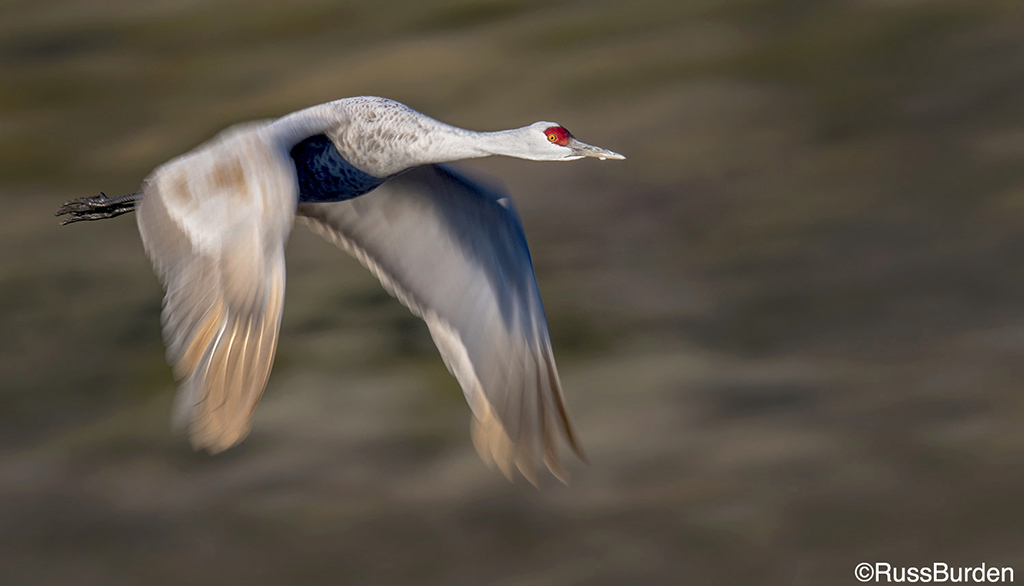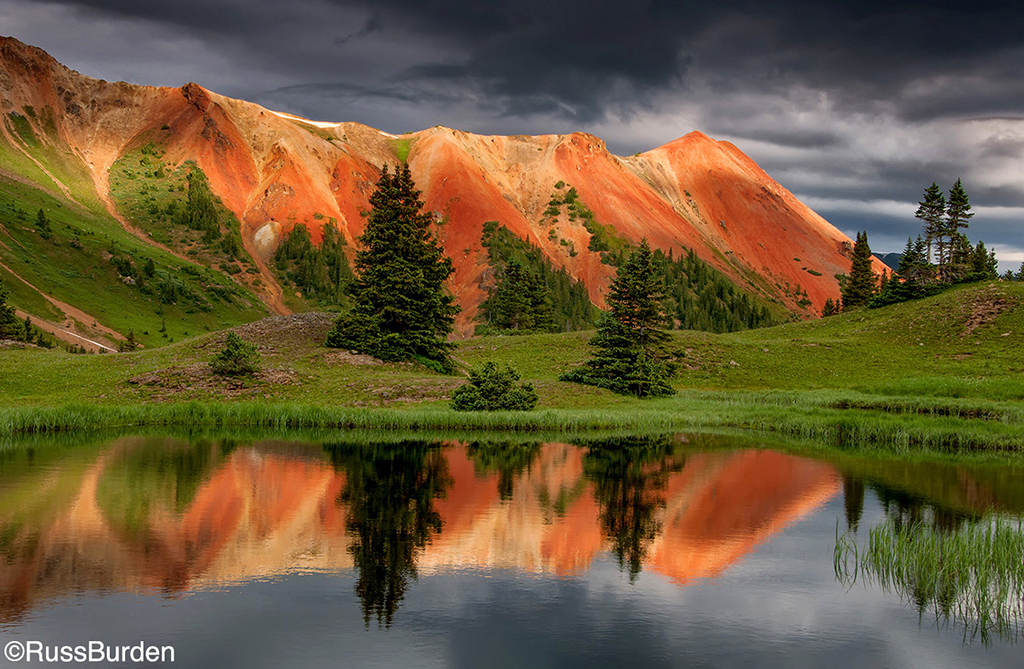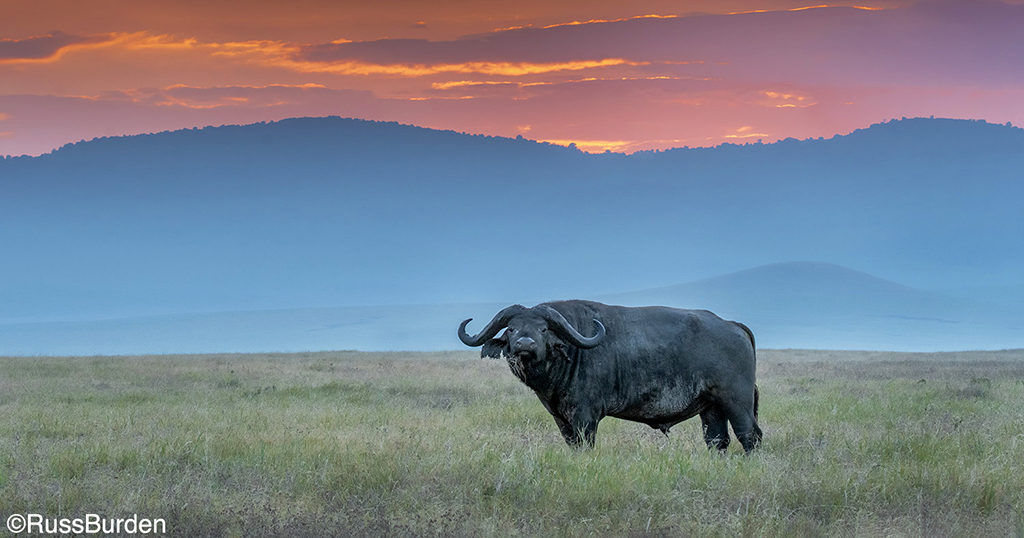Advertisement
Advertisement
Read Next

10 Action In Nature Quick Tips
As you know, nature photography isn’t...
Critically Sharp Captures
To obtain excellent-quality, tack-sharp...
Get Drenched In A Downpour Of Pixels

Get Drenched In A Downpour Of Pixels
Over 70 percent of the Earth’s...
The Amount Of Light Dictates The Strategy
Thick gray clouds, dawn, interiors,...Advertisement


Shoot The Moon: Night Photography Tips
Moonbow and Big Dipper, Lower Yosemite Fall, Yosemite National Park, Calif. Canon EOS-1Ds Mark III set at ISO 800, 30 sec. exposure at ƒ/4. Keeping the exposure to 30 seconds or less prevents the stars from becoming streaks.
I started “shooting the moon” in a quest for unique photos, and while I’m certainly happy with my results, I’ve discovered that the actual experience of moon and moonlight photography is just as rewarding as the images I bring home. When the sun departs, so do the photographers and other reminders of a more hectic world—in their void, I can explore landscapes freely, set up my tripod wherever I want and simply relish the solitary wait for moonlight in some of nature’s most special locations.
Gear Up
Darkness, cold weather, night breezes and unfamiliar terrain all conspire to magnify the shortcomings of even the most robust photography equipment. Before embarking on a nighttime shoot, make sure you have the right equipment, it’s in good working order, and you know it well enough to operate it in the dark.
With exposures measured in seconds or minutes, of foremost importance is your tripod. If you don’t have a rock-solid tripod, buy one, rent one or borrow one. Tripod leg warmers and/or carbon-fiber legs will improve both your comfort and dexterity on cold nights in the field. If the wind picks up, adding weight to your tripod will help stabilize it—I attach my camera bag to the hook at the bottom of the center post, but a plastic grocery bag filled with dirt or rocks will do the job, too.
A remote release (wired or wireless) is a small investment that will further minimize vibration, and a locking remote is essential if you plan to shoot in Bulb mode. If your camera has mirror lockup, use it. Depending on your shutter speed and focal length, it may not make a difference, but anything that reduces vibration never hurts. In low-light focusing situations (more on this later), a good quick-release mechanism is helpful.
Batteries don’t perform as well when cold. Make sure your battery is fully charged; in extremely low temperatures, a backup battery is good peace of mind. Store any battery not in your camera close to your body to keep it warm. A photo vest makes this easier. I also appreciate my photo vest because having my lenses within arm’s reach sure beats tracking down and rummaging through my camera bag in the dark.
Rising full moon from Sentinel Dome, Yosemite National Park. Canon EOS-1Ds Mark II set at ISO 100 with a 1/2 sec. exposure at ƒ/14.
Keeping Warm
I never want the temperature to cause me to rush or to drive me for shelter when I’d otherwise be shooting. Since I prefer being far too warm to just a little too cold, I always dress for the projected overnight low for the area I’ll be shooting. This is most important for sunrise shoots, as the lowest temperature is usually right around sunrise.
On particularly cold nights and mornings, I wear a thin pair of wind-resistant gloves under a thick pair of warm, fingerless gloves. This keeps my hands warm while retaining enough feel to manage my camera’s buttons and dials. A wool hat that covers my ears is another important part of my nighttime wardrobe. Hat and gloves all fit nicely in the pocket of my down jacket or vest if I get too warm.
Do Your Homework
There are only a handful of days each month when the moon’s phase and position are ideal for photography. Because the moon’s arrival, departure and location change significantly each night, it’s important to anticipate, not react. If you see the moon on your way home from work and think, wow, I’ll have to get out tomorrow night to shoot that, you’re too late.
Many resources are available to help you determine the moon’s phase and position. Most GPS devices provide this information, as do many websites. One site with all the phase and position info I need is www.usno.navy.mil/USNO/astronomical-applications. Applying this site’s lunar altitude and azimuth information to my National Geographic Topo software (other map applications will do the same thing), I can calculate exactly when and where the moon will rise and set from any location on earth. Don’t forget that moonrise/set and sunrise/set times are based on a flat horizon—you’ll need to account for anything (mountains, trees, buildings) between you and the horizon.
If these kinds of computations sound daunting, don’t despair—simply knowing moonrise and moonset relative to sunrise and sunset, and the general direction (east or west) is enough to get started. And many iPhone apps offer astronomical data.
Focalware gives me all the information I need to instantly (albeit approximately) locate the moon from wherever I am. Regardless of the approach you take, the more you do it, the better you’ll become at finding the moon when and where you want it.
Photographing A Full Moon
A full moon is directly opposite the sun, with the earth in between, rising in the east as the sun sets in the west. But I like to capture detail in both moon and foreground—a sun that sets as the moon rises rarely leaves enough light to capture foreground detail without overexposing the moon. The best time to photograph detail in the lunar disk is when the sun and moon are both low on the horizon and the moon is nearly full—easy if you know how.
As the moon cycles through its phases, it rises and sets roughly one hour later each night. That means the day before a full moon, when the moon is more than 95% full, it rises in the east shortly before sunset. That extra hour or so provides ample time to photograph a nearly full moon suspended in the east above a landscape glowing with warm, late light.
Similar reasoning applies when the scene you want to photograph requires the moon’s disk in the western sky. Since the moon sets an hour (or so) later each day, you can count on a nearly full moon on the western horizon a little after sunrise the day following a full moon.
Exposing to balance detail in the foreground against detail in the full moon’s disk is sometimes difficult. Trial and error will help you find the brightest exposure that doesn’t overexpose the moon. I have blinking highlights turned on in my digital camera, but have to look very close to see them in the moon.
Shooting RAW, I’m comfortable exposing up to a stop beyond the point where the highlights start to blink, then recovering the highlights in postprocessing. Sometimes I process the RAW image twice—once for the foreground and once for the moon—then blend them in Photoshop. Since it’s the same image, I never need to worry about everything lining up.
Rising moon, South Tufa, Mono Lake, Calif. Canon EOS-1Ds Mark III set at ISO 100 with a 1/2 sec. exposure at ƒ/16.
Photographing A Crescent Moon
A new moon occurs when the moon is between the earth and the sun, meaning its illuminated side faces the sun and away from the earth, making it not visible from earth. But since the moon arrives and exits about an hour later each day, adding or subtracting a thin slice of detail with each passing, you’ll find its crescent near the amber-to-indigo transition zone between day and night one or two days before and after the new moon. The day before it’s new, the moon’s thin crescent hangs low in the east just before sunrise; the day after it’s new, you’ll see a similar crescent in the western sky right after sunset.
I’ve also had good success at sunrise two days before the new moon, and at sunset two days after the new moon. That extra day gives the crescent just a little more body and provides separation between the moon and the sun, keeping the moon’s crescent from being overpowered by sunlight.
On nights I plan to shoot a crescent in the western sky, I arrive early enough to photograph sunset. Once the sun is down, I start searching for the moon’s crescent in the darkening portion of the western sky. For a crescent in the east, I try to be in place an hour before sunrise and continue shooting through sunrise, long after the moon is washed out by the brightening sky.
Finding The Scene
Whether I’m after a delicate crescent or a robust full moon, I try to scout locations and plan compositions in advance. Looking for scenes that would be enhanced by a full or crescent moon has become second nature, not just on my photo trips, but in my everyday travels, as well. Recognizable landmarks, prominent features like trees, city skylines, lakes and oceans, or rivers and streams that flow in the direction of the rising or setting moon, make excellent subjects.
An extreme telephoto lens can beautifully silhouette a distant ridgetop tree against the moon’s brilliant disk, but a common misconception is that photographing the moon requires maximum magnification. Many of my most successful moon images, full and crescent, are wide, using the moon as an accent to turn an already striking scene into something special.
Photographing a crescent moon means shooting toward the brightest part of the sky, making exposure difficult. It’s the moon’s shape, not its features, that make a successful crescent image, so an overexposed crescent doesn’t bother me. And crescent moons are made for silhouette images. Look for a prominent shape—a tree or mountain, for example—that stands out against the sky. Water’s ability to reflect the sky’s light and color makes it another ideal foreground subject.
Shooting In Moonlight
On nights I photograph a rising full moon, I usually plan to stay out and photograph in moonlight. When the sun finally leaves and the stars appear, I turn my camera away from the full moon and start photographing the moonlit landscape. In most of my moonlight shots, the moon is at my back because it’s important that my subject be frontlit. Keeping my exposure times at 30 seconds or below minimizes star movement (I prefer waiting for moonless nights to photograph star trails), especially if I’m using a fairly wide lens.
The moon’s brightness varies each month, but rather than rely on my meter and histogram for exposure settings, experience has given me an exposure starting point that gets me within one stop on the first shot. I typically start at ISO 400 at ƒ/4 for 30 seconds (don’t forget to remove your polarizer!). A glance at my LCD—not my histogram—usually tells me whether I need to dial it up or down a stop.
Many moonlight shots look like daylight photos with stars. That’s partly because they’re too bright and partly because auto white balance doesn’t understand moonlight. My moonlight histogram is always skewed left and is rarely much use to me. And shooting RAW allows me to adjust the Photoshop WB slider until I find the best color temperature. Generally, shifting the color temperature slider to the left, below 4,000, restores the blue tint that gives the scene a nighttime feel.
As with daytime photography, moonlight images benefit from a strong foreground. But foreground for moonlight shooting is relative—with the limited depth of field of a large aperture, my foreground subjects are generally at infinity and large (no intricate foreground detail in moonlight). Reflective subjects like water or granite work best. Silhouetting trees or other prominent objects against the night sky is also effective. And adding a recognizable constellation to a moonlight image is a great way to make it memorable. The Big Dipper, Cassiopeia and Orion all make wonderful overhead complements for a moonlit earthbound subject.
Another thrilling moonlight element is a “moonbow,” the moonlight version of a rainbow. Unlike the human eye, a camera’s timed exposure capability allows it to accumulate light, revealing the rainbow prism the eye can’t see. To capture a moonbow, position yourself in view of a waterfall when a full moon is low in the sky, with your moon-shadow pointing directly at the waterfall’s mist. Start with exposure settings I suggested earlier and increase until you see the moonbow in your LCD.
Get Focused
Conventional focusing using moonlight ranges from difficult to nearly impossible. There’s rarely enough light for autofocus, and manually focusing is often guesswork. Fortunately, most moonlight scenes are at distances that allow focus at infinity. Infinity focus isn’t as easy as it sounds when the infinity point of your zoom lens changes with the focal length, but it enables a simple focus trick: Compose your shot on a tripod, and without changing the focal length, remove the camera from the tripod (an easy quick-release plate helps here), and autofocus on the moon. When focus is locked, change to manual focus, return the camera to the tripod, and take your shot.
Just Do It
Compared to a typical photography outing, shooting the moon adds a few wrinkles, but with a little research, patience and a capacity for minor discomfort, you can enjoy solitude in even the most photographed locations. Preparation and the right equipment will allow you to enhance any scene with a radiant lunar disk or crescent, or turn a photo that would be cliché by day into a star-studded moonlit landscape. Whether or not you get perfect results, you’ll certainly have a memorable outing and probably return home with lots of ideas for the next time.
Unless you stay out until sunrise, you’ll be walking back in the dark. Don’t think simply hiking to your destination by daylight will be enough to enable you to find your way back safely in darkness. Any route looks entirely different in reverse, a problem magnified by darkness, making a simple route by day a maze of shadows at night.
Stay alert on the way to your destination, noting prominent landmarks such as large trees, rocks or anything else that might stand out in the dark. If you know how to use it, a GPS can be a real help, but don’t purchase your GPS in the afternoon and expect to be able to navigate with it in the dark that night. Whenever possible, I try to walk the route to my moonlight location, and back, in advance.
Full-moon light is bright enough that sometimes I don’t need artificial light, but if I’m hiking through a forest, or the moon goes behind clouds or a mountain, too much light is better than not enough. I carry a small (but bright) flashlight and headlamp. I don the headlamp when it gets too dark to view the controls on my camera or locate items in my bag. The flashlight is for the walk back to the car, which when combined with the headlamp, allows me to view the ground at my feet and the trail ahead.
See more of Gary Hart’s work and learn how to enroll in one of his workshops at www.eloquentimages.com.